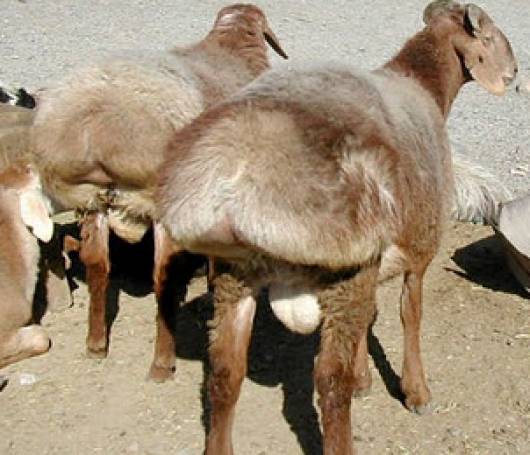
Fat-tailed sheep are a distinctive group of breeds that store fat in their broad, fatty tails or rumps, similar to how camels store fat in their humps. These breeds are especially common in arid and semi-arid regions where high-energy fat reserves help them survive food and water shortages.
🔹 Why Fat-Tailed Sheep?
- Fat storage: Acts as an energy reserve in harsh climates
- Hardy and drought-resistant: Ideal for deserts and dry grasslands
- Cultural importance: Fat is a traditional cooking ingredient in Middle Eastern, African, and Central Asian cuisines
- Dual-purpose: Many also produce milk or wool
🐏 Top Fat-Tailed Sheep Breeds
1. Awassi (Middle East)
- Multi-purpose: Milk, meat, and fat
- Traits: Heat-tolerant, great milk yield
- Tail: Large, rounded fat tail
- Uses: Dairy (especially in Syria, Iraq, Israel), meat, and cultural dishes
2. Karakul (Central Asia)
- One of the oldest domesticated sheep breeds
- Traits: Fat tail, coarse wool, used for pelts (especially lamb pelts known as “Persian lamb”)
- Appearance: Long face, often black or gray
- Uses: Wool, meat, and specialty pelts
3. Ghezel (Iran, Azerbaijan)
- Dual-purpose with good meat and milk yield
- Traits: Large, heavy fat tail; good in tough environments
- Use: Popular in traditional diets in Iran
4. Najdi (Saudi Arabia)
- Tall, black sheep with a distinctive profile
- Traits: Long legs, adapted to desert climates
- Tail: Moderately fat-tailed
- Uses: Valued for meat and cultural significance
5. Baluchi (Pakistan, Afghanistan, Iran)
- Well-adapted to desert environments
- Traits: Good milk production, hardy grazer
- Tail: Wide, heavy fat tail
- Uses: Subsistence farming and regional cheese-making
🥩 Culinary Use of Fat Tails
Fat from the tail is used in:
- Pilafs, kebabs, and stews in Central Asia and the Middle East
- Rendered into tail fat (tallow) for cooking
- Considered a delicacy in many pastoral cultures
🌍 Where Fat-Tailed Sheep Are Common
| Region | Common Breeds |
|---|---|
| Middle East | Awassi, Najdi |
| Central Asia | Karakul, Gissar |
| North Africa | D’man, Libyan Fat-tailed |
| Horn of Africa | Somali Fat-tailed |
| South Asia | Baluchi, Dumba |
🐑 Key Traits of Fat-Tailed Sheep
| Feature | Description |
|---|---|
| Tail Shape | Wide, heavy, and often lobed or heart-shaped |
| Climate | Thrive in arid, hot, and poor pasture environments |
| Energy Use | Fat used during migration or feed scarcity |
| Production | Primarily meat; some are milked or used for pelts |
| Cultural Value | Important in traditional feasts and festivals |
Would you like images of these breeds or help sourcing fat-tailed sheep for farming or research?